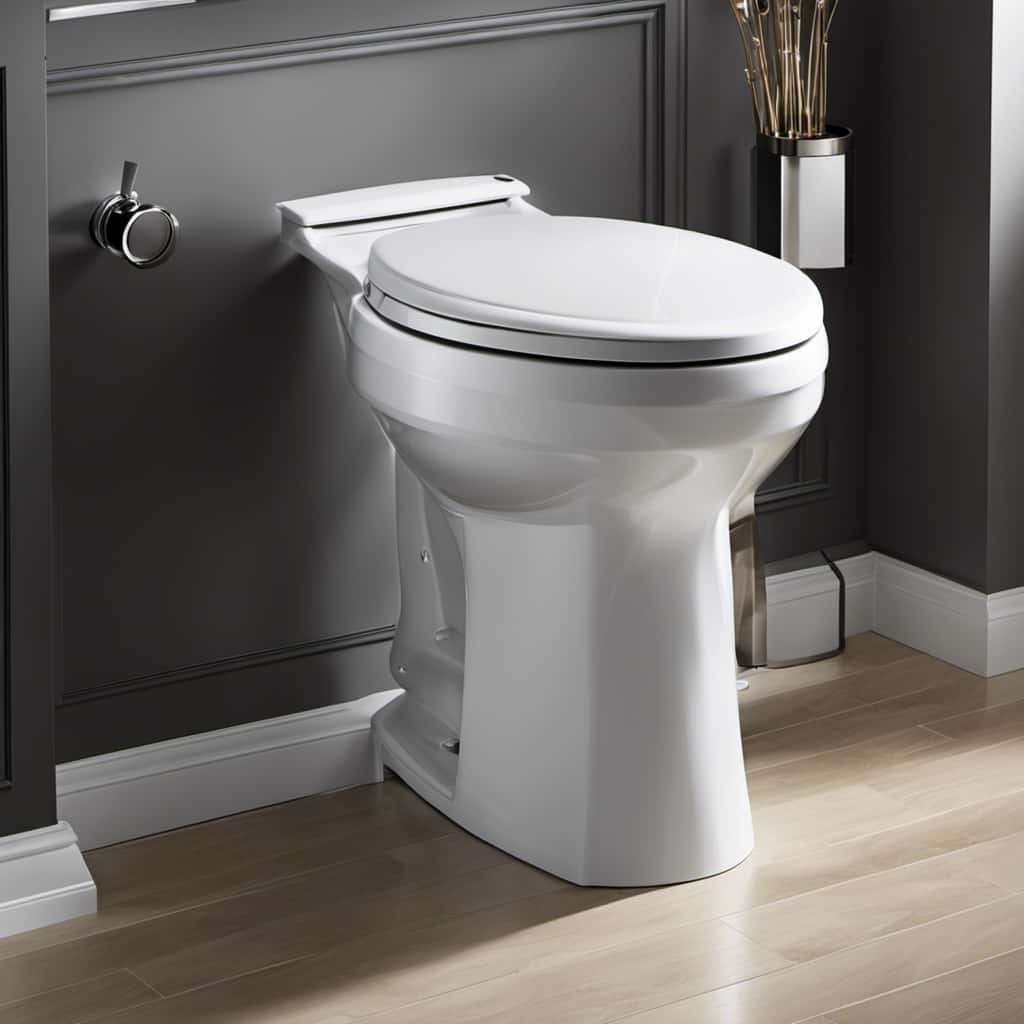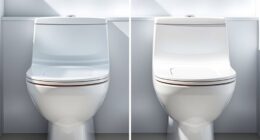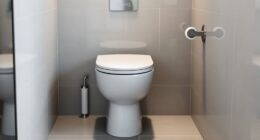Have you ever found yourself in the frustrating situation of a clogged toilet? Fear not, for I am here to guide you through the steps of unclogging your toilet with ease.
In this article, I will share with you the common causes of toilet clogs, the tools and materials you’ll need, and simple yet effective DIY solutions.
With my step-by-step instructions and expert advice, you’ll become a master in the art of toilet unclogging.
Key Takeaways
- Using too much toilet paper can cause clogs
- Signs of a clogged toilet should not be ignored
- Mindful toilet paper usage is important to prevent clogs
- Avoid using chemical drain cleaners as they can be harmful
Common Causes of Toilet Clogs
One common cause of toilet clogs is using too much toilet paper. To prevent a toilet clog, it’s important to be mindful of the amount of toilet paper being used. Signs of a clogged toilet may include slow drainage or water backing up into the bowl.
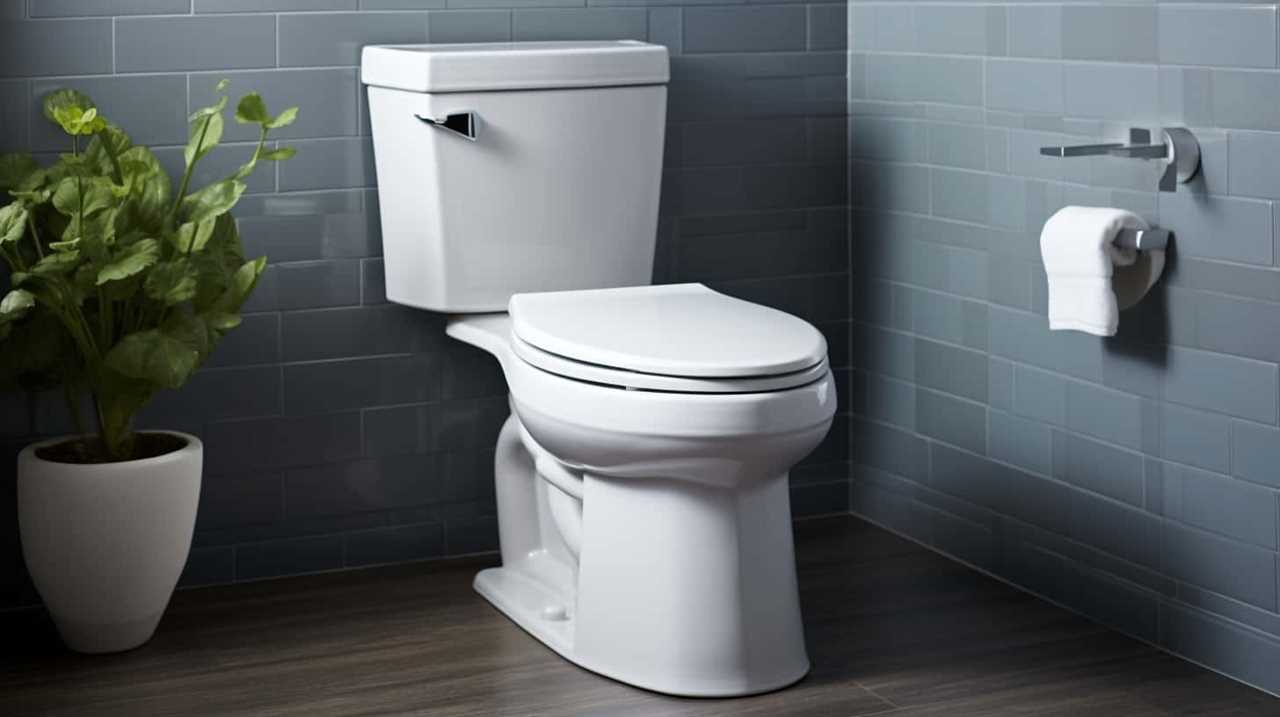
To unclog a toilet, there are a few steps you can follow. First, try using a plunger to create a seal around the drain and then push and pull vigorously to dislodge the clog. If that doesn’t work, a toilet auger can be used to break up the clog. It’s important to avoid using chemical drain cleaners as they can damage the pipes.
Regular maintenance and mindful use of toilet paper can help prevent future toilet clogs.
Tools and Materials You’ll Need
To successfully unclog a toilet, there are a few essential tools and materials that you’ll need. Here’s a list of the items you should have on hand:
- Plunger: This is the most common tool used for unclogging toilets. Make sure you have a sturdy plunger with a rubber cup that can create a tight seal.
- Toilet auger: Sometimes a plunger mightn’t be enough to clear the clog. A toilet auger, also known as a plumbing snake, can reach deeper into the drain to break up stubborn blockages.
- Rubber gloves: It’s important to protect your hands from any potential mess. Wear rubber gloves to ensure cleanliness and hygiene during the unclogging process.
- Bucket: A bucket can come in handy to collect excess water or debris that may overflow while unclogging the toilet.
Simple Steps to Unclog a Toilet
I start by gathering the necessary tools and materials for unclogging a toilet. The two main tools I’ll need are a toilet plunger and a toilet snake. The plunger is used to create suction and force water through the drain, while the snake is a long, flexible tool that can reach deep into the pipes to remove clogs.
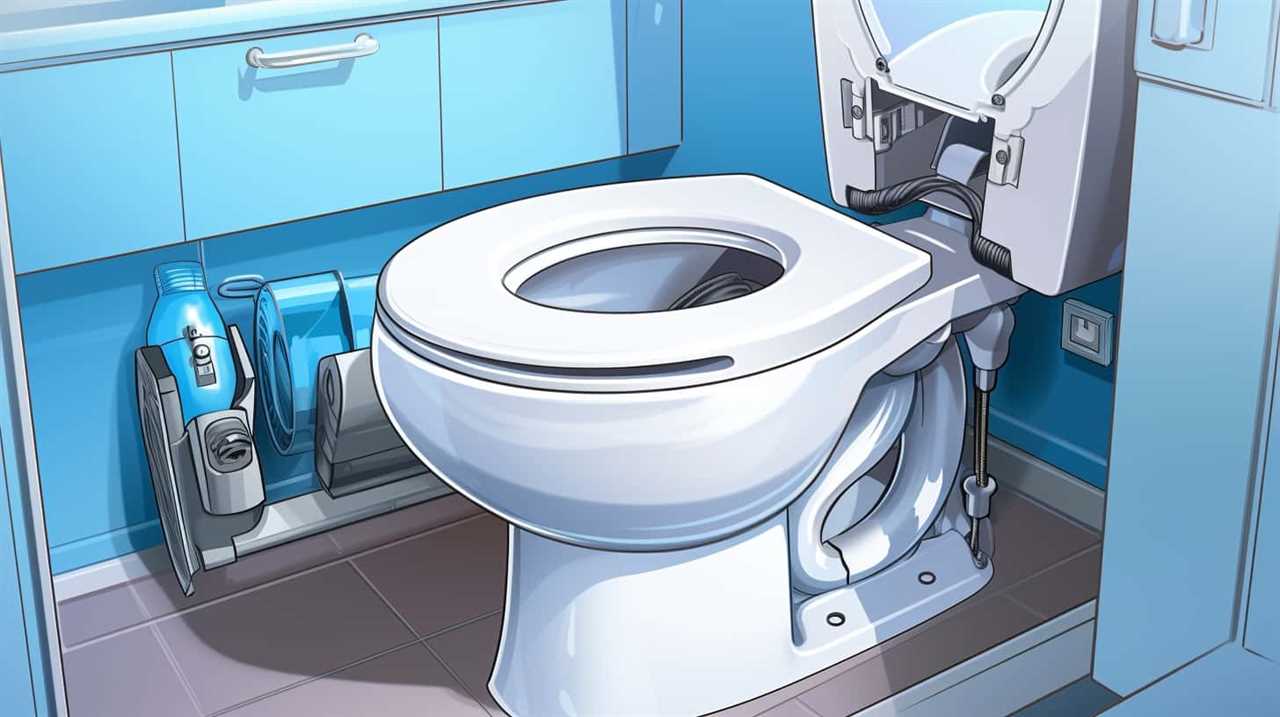
Here is a step-by-step guide to unclogging a toilet:
- Put on gloves to protect your hands from any unpleasant mess.
- Position the plunger over the drain hole and push down firmly.
- Pump the plunger up and down vigorously, creating suction to dislodge the clog.
- If the plunger doesn’t work, try using a toilet snake. Insert it into the drain and rotate it clockwise to break up the clog.
- Continue to push and pull the snake until the clog is cleared.
Remember to always exercise caution when using these tools, and if the clog persists, it may be necessary to call a professional plumber for further assistance.
Effective DIY Solutions for Stubborn Clogs
After gathering the necessary tools and materials, I began tackling stubborn clogs using a powerful drain cleaner. Here are four effective DIY solutions to unclog your toilet:
- Plunger Method: Place the plunger over the drain hole and pump it vigorously to create suction. Repeat this motion several times until the clog loosens and water starts to drain.
- Hot Water and Dish Soap: Pour a pot of hot water mixed with a few tablespoons of dish soap into the toilet bowl. Let it sit for a few minutes, then flush. The heat and soap will help break down the clog.
- Vinegar and Baking Soda: Pour half a cup of baking soda into the toilet, followed by one cup of vinegar. Let the mixture fizz for a few minutes, then flush with hot water. The chemical reaction can dissolve the clog.
- Auger Method: Use a toilet auger or a plumbing snake to physically break up the clog. Insert the auger into the drain and rotate it clockwise until you feel resistance. Push and pull the auger to dislodge the clog.
If these DIY solutions don’t work, it may be time to seek professional plumbing assistance.
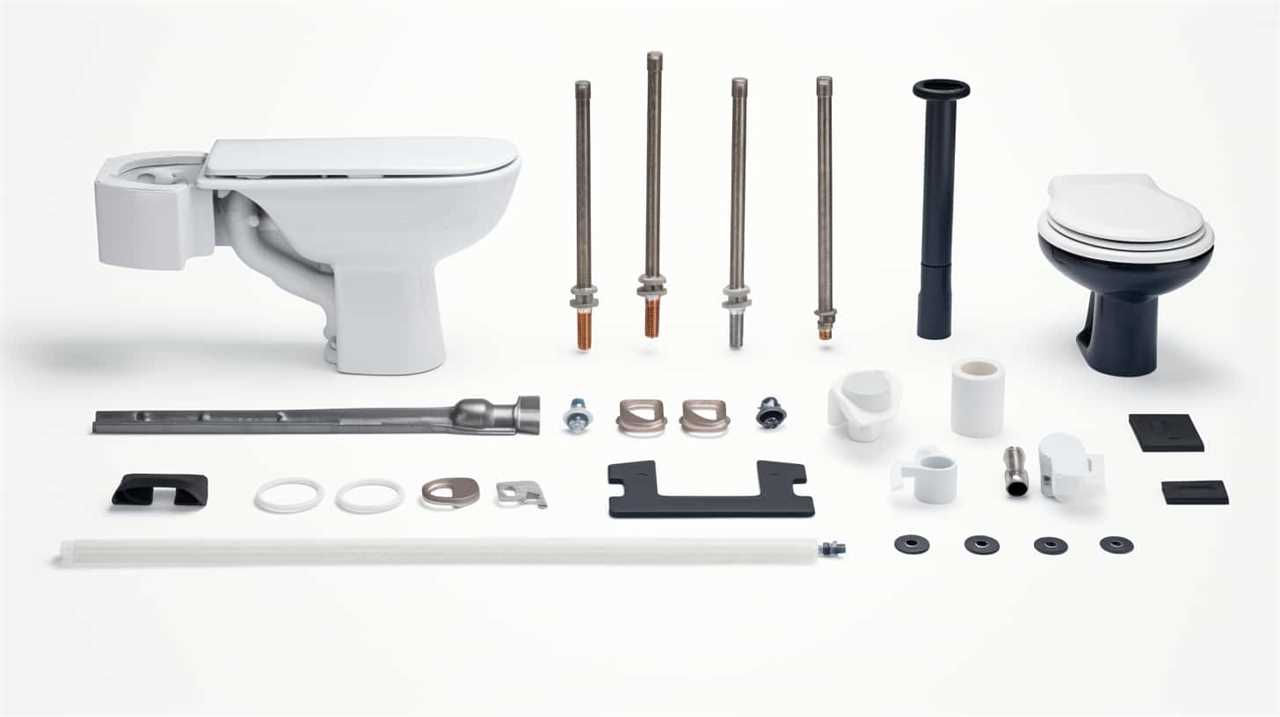
Now, let’s discuss how to prevent future toilet clogs.
Preventing Future Toilet Clogs
Moving forward, let’s explore some effective measures to avoid future toilet clogs. Proper toilet maintenance is essential for keeping your toilet running smoothly. Here are some tips for avoiding toilet clogs:
- Watch what you flush: Only flush toilet paper and human waste. Avoid flushing items like wipes, feminine hygiene products, or excessive amounts of toilet paper, as they can clog the pipes.
- Use less toilet paper: Using excessive amounts of toilet paper can lead to clogs. Use only the amount you need to avoid overloading the system.
- Regular cleaning: Clean your toilet regularly to prevent build-up of residue and debris that can lead to clogs.
- Install a toilet paper holder: Using a toilet paper holder can prevent excessive amounts of toilet paper from being used, reducing the chances of clogs.
Frequently Asked Questions
How Do I Know if My Toilet Is Clogged?
To determine if my toilet is clogged, I look for signs such as water rising or not draining properly. If it is clogged, I can follow steps like using a plunger or a toilet auger to unclog it.
Can I Use Any Household Items to Unclog a Toilet?
Yes, you can use certain household items to unclog a toilet. Some popular toilet unclogging techniques include using a plunger, a plumbing snake, or a mixture of baking soda and vinegar.
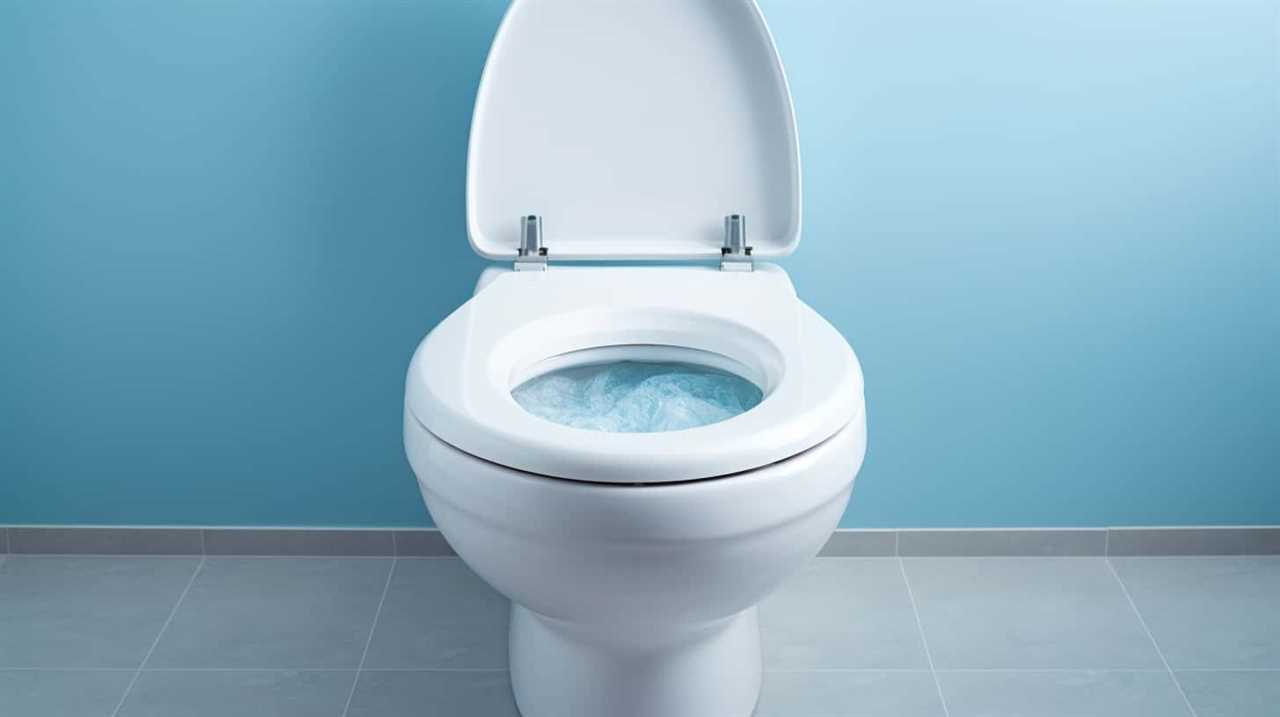
What Should I Do if the Clog Is Not Resolved After Using DIY Solutions?
If the clog persists after attempting DIY solutions, I recommend calling a professional plumber. They have the expertise and tools to effectively unclog toilets. Alternative methods may further damage the plumbing system.
Are There Any Natural Remedies to Unclog a Toilet?
There are natural remedies to unclog a toilet, such as using a mixture of baking soda and vinegar. These methods can be effective, but they may not work as quickly as chemical solutions.
How Often Should I Clean My Toilet to Prevent Clogs?
I clean my toilet regularly to prevent clogs. Best practices for toilet cleaning frequency involve cleaning at least once a week, using a toilet brush and appropriate cleaning products to remove debris and bacteria.
Conclusion
In conclusion, unclogging a toilet can be a simple and straightforward process if you have the right tools and follow the steps outlined in this article.
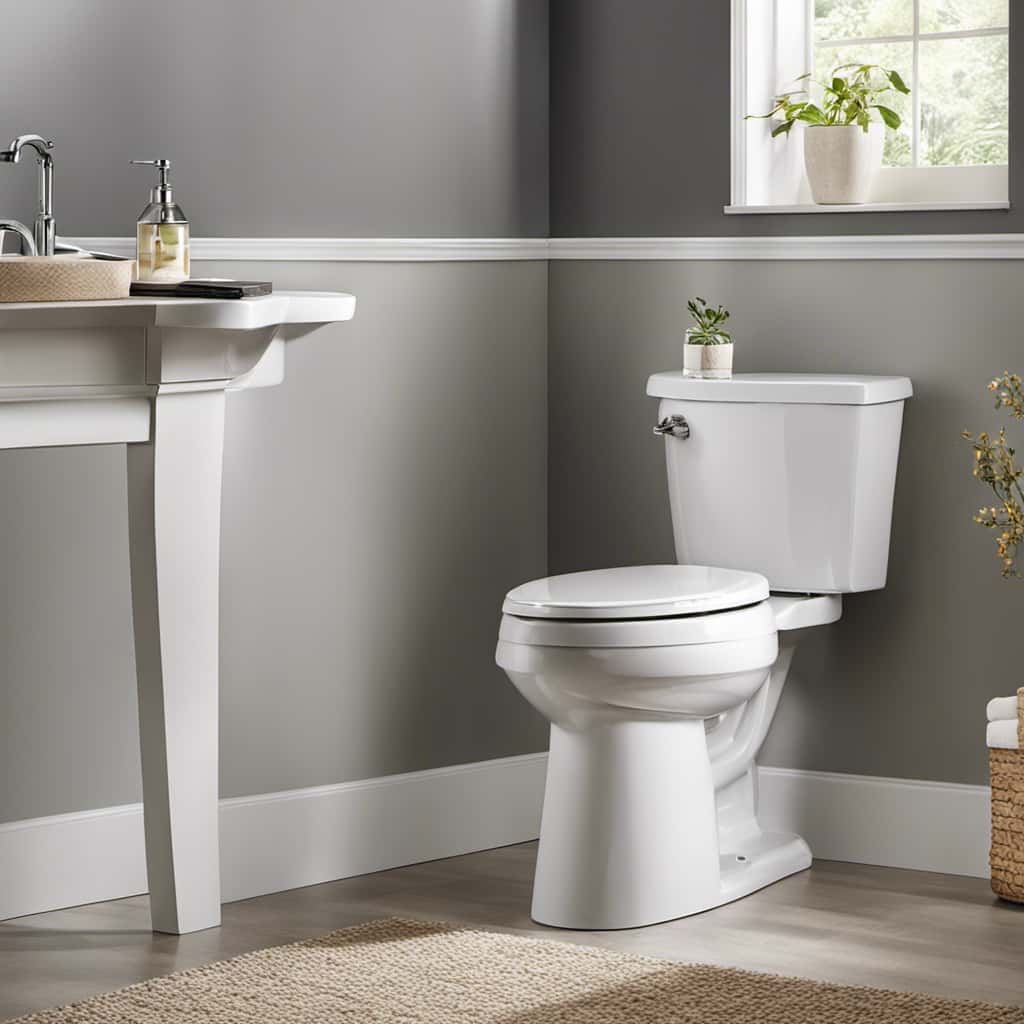
However, it’s worth noting that toilet clogs are a common occurrence, with an estimated 27 million American households experiencing at least one clog each year.
By understanding the common causes of clogs and implementing preventive measures, you can minimize the chances of facing this inconvenience in the future.






